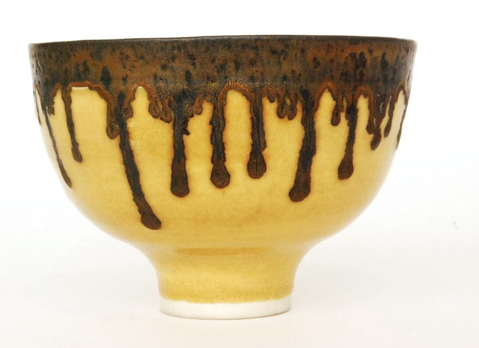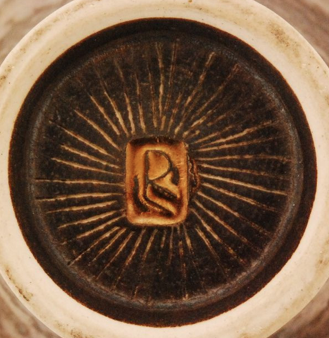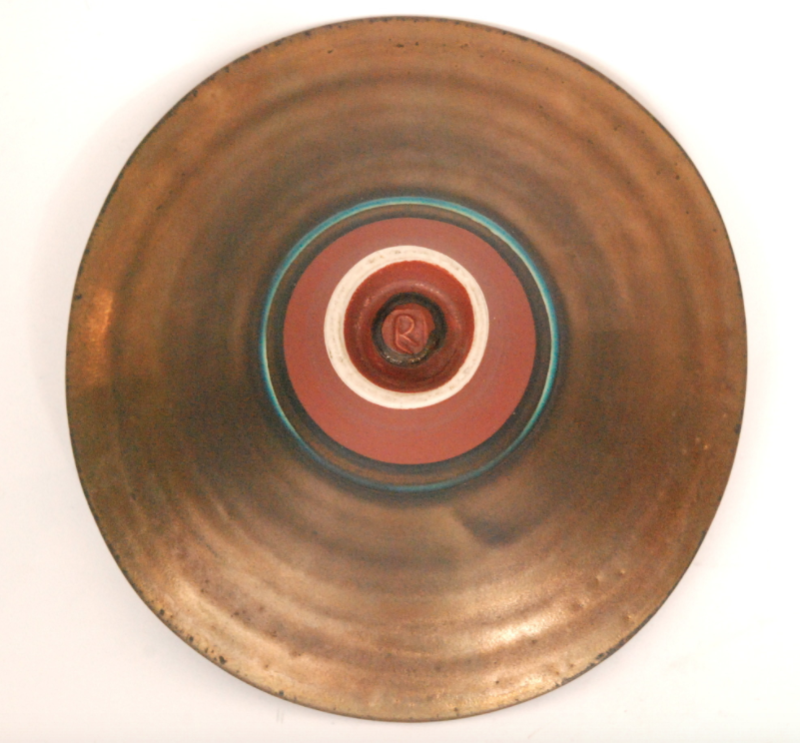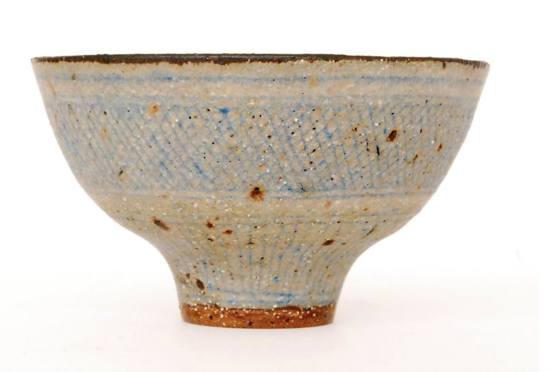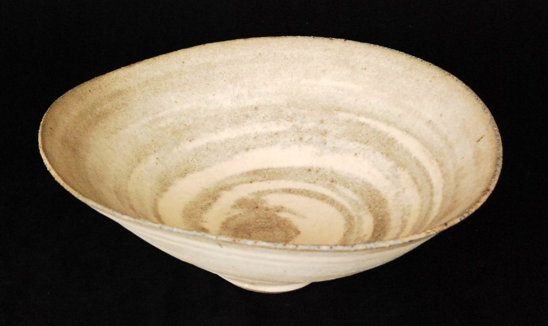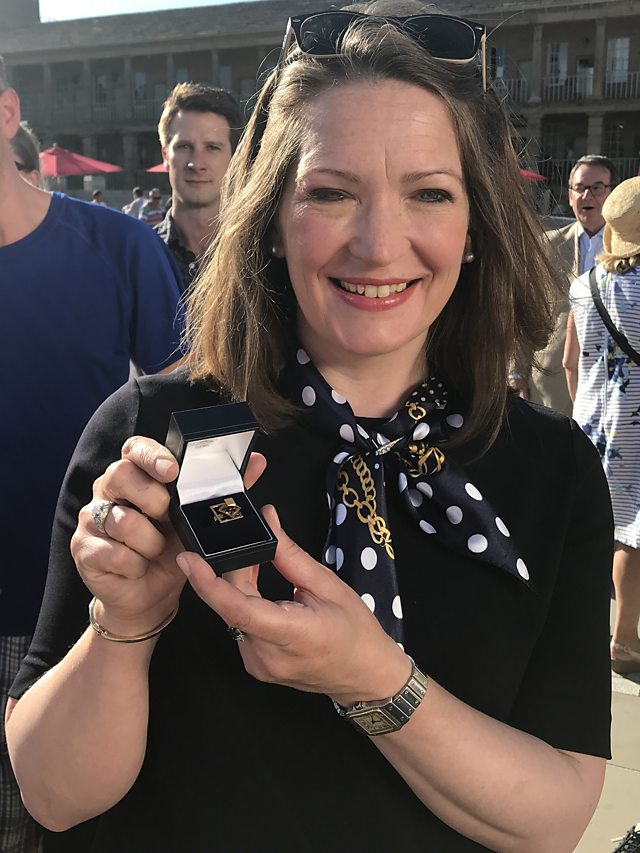Throw back Thursday - Dame Lucie Rie
Its that time of week again where we look back through the Fieldings archive at some of our favourite finds! Today Will Farmer takes a look at the work of one of the greatest studio potters, Dame Lucie Rie.....
Her work is held in some of the greatest collections around the world and hailed as some of the finest examples of the ceramicists art. Pieces rarely turn up at auction however over the years Fieldings have been fortunate to handle a number of beautiful examples but who is the woman behind the potters wheel and why do her works command such high prices amongst collectors and institutions.
Dame Lucie Rie – Potter – 1902 to 1995 – “To make pottery is an adventure to me, every new work is a new beginning.”
Dame Lucie Rie stands as one of Britain’s most influential and respected potters who, through her long career, enjoyed critical acclaim and great public honours, from a retrospective exhibition at the Arts Council in 1967 to the award of her Damehood in 1991. Her work achieved international acknowledgement and admiration, culminating in an exhibition of her life’s work at the Metropolitan Museum of Art in New York in 1994.
Born Lucie Gomperz in 1902 in Vienna, she was the third and youngest child of a prosperous doctor with progressive taste in art. Artistically inclined but unsure of her direction, she enrolled at the Vienna Kunstgewerberschule in 1922 where she learnt to throw, a technique which she would use throughout her life. Furthermore she studied and learnt the complicated techniques and processes of glaze production, application and firing which enabled her to develop a range of volcanic and textured finishes which where to became major characteristics of her work. Her pots were elegant, minimal, concentrating on deceptively simple-looking tall cylinders and rounded bowls.
As the 1930s progressed the threat to the Jewish community in Vienna increased as anti-Semitism became more widespread. Following the union of Austria with Nazi Germany, it was clear that she and her husband, Hans Rie whom she had married in 1926, had to leave, and both arrived in London in 1938. A mews house was rented near Marble Arch, in central London, and the old stables converted into a pottery studio.
Rie arrived with some earthenware pots decorated with her signature textured and mottled glazes, despite their wide acclaim on the Continent, they were coolly received in London artistic circles. Nevertheless leading potter Bernard Leach recognised her talent and invited her to join him at his new studio. Though it was clear they were working along different lines, they became lifelong friends and Rie always said that it was he who taught her how to make handles.
During the Second World War Rie found an outlet for her ceramic skill by designing and making a range of buttons and jewellery for Bimini. The process enabled her to use all her technical expertise producing her trademark brightly coloured and textured glazes. The arrival of Hans Coper, a young German refugee (and budding sculptor), as an assistant to help make the buttons, marked the start of a creative partnership in which Rie always claimed that it was she who was the student.
As well as making a small range of elegant and refined domestic pots such as teacups and saucers, plates and coffee-pots Rie produced individual vases and bowls. These were decorated either in rich, deep colours such as greens and yellows, many with a metallic bronze and gold rim, or were covered with dry, pitted glazes with dramatic but carefully controlled volcanic textures. All were thrown on the wheel and turned so that no throwing lines were left to disrupt the crisp profile and smooth surfaces. As a potter working in the centre of a large city, Rie had limited space, her output was small and she produced in limited quantity. As such the prices of her pots tended to be high in comparison with those of her contemporaries, a fact to which she was always acutely aware!
The pottery studio below her flat in Albion Mews was always kept immaculately clean and tidy. Two continental potters’ kick-wheels stood below the windows, the large electric kiln occupied one end and a stove to the other. Rie threw in an acutely personal style using a minimum of water, and she would step off the wheel after throwing as clean and spotless as when she went on.
Firings were a long and slow process and short periods of sleep were snatched between kiln adjustments. Over the years as the process’s and materials became more refined some of the earlier effects became more difficult to reproduce however endless testing took place to develop new glazes and colours. Contemporary potters curious to know her secrets were given scant information, though in later years more recipes and processes were divulged, but always with the warning that they only worked for her.
Exhibitions at the old Burlington Galleries above the Royal Academy and at the Berkeley Gallery brought her pots before a small but highly appreciative audience. Galleries overseas were equally if not more enthusiastic. It was not until the Arts Council's retrospective exhibition in 1967 that she gained the official recognition she merited. A year later she was appointed OBE and received an Honorary Doctorate at the Royal College of Art.
In 1991 she was created a Dame and in 1992 a large retrospective exhibition at the Crafts Council Gallery reviewing her career as a potter attracting record attendances and rave reviews.
Following this a continual stream of visitors called to see her. They were politely shown round the studio and, with traditional Viennese courtesy, offered strong coffee or tea along with home-made chocolate cake or fruit pudding. Spare moments grabbed between visitors were spent in the studio making or finishing pots and Rie would often work late into the night.
Quietly spoken and still with a strong Viennese accent, Rie could be both alarming and delightful, her small trim figure carrying a commanding presence. Her acute observation of contemporary work, of which for the most part she was highly critical, could make her seem forthright in her opinions, but these were always tinged with kindness and understanding. A stroke in 1990 left her unable to continue work, though she retained a lively interest in pots and potters and was able to attend her Crafts Council retrospective.
One of the most creative studio potters of the century, she leaves a legacy of work which will be admired and enjoyed for years to come.
Might you own a piece by the great Dame Lucie Rie or maybe one of her contemporaries? If you'd like to find out please send your pictures to will@fieldingsauctioneers.co.uk and I'll be happy to tell you more.
Posted on 9 April 2020
Be in the know
Sign up for auction email alerts so you never miss another sale at Fieldings!
Register now
